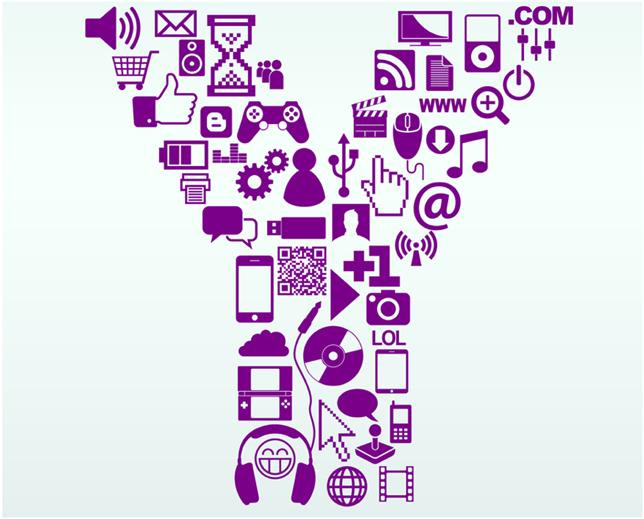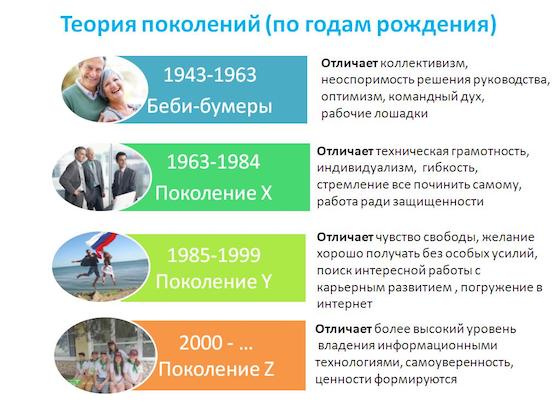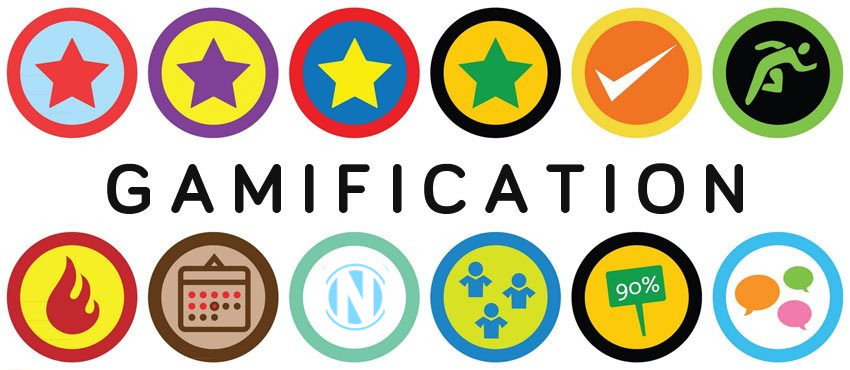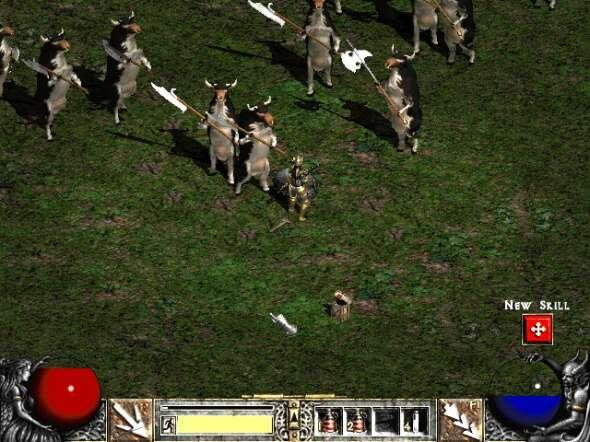Gamers in life: what we know about Generation Y

Millennials are largely unique - they are those who grew up with a game joystick in their hands. Now they become the predominant generation, which begins to focus on the whole environment. Together with the Millennials, gamification penetrates the culture, which takes root in all areas, and, above all, marketing and trade. MEGA successfully applies new technologies on its sites, and what we get from this and how gamification affects the behavior of Generation Y will be described in our article. But we will start with the theory. More precisely, from The Theory of Generations.
The origins
In 1991, the Americans William Strauss and Neil Hove analyzed the historical and economic cycles in US history and thus launched the “ Generation Theory ”. The theory was accepted by the public and traced in other countries, including Russia.
Conclusions of the "theory of generations"
In their works, Strauss and Hove made some interesting conclusions:
- We determined that generation is the totality of all people born in the interval of ~ 20 years. Such a period is equivalent to one phase of life: childhood, youth, middle age and old age. At the time of the birth of the theory, Generation Y (or Millennials) was just forming: people born from 1983 to 2003.
- They showed that the basis for the formation of the “human generation” is the events of the first phase (childhood). Generation Y at that time had the collapse of the USSR, the “dashing 90s”, the development of information technology, free access to any information.
- Allocated historical cycles of four generations. So, the first generation in the current cycle is called the “Greatest Generation” : those born between 1903-1923.
- They proved that generational cycles overlap with economic ones: each generation has its own crisis phase. The “Millennials” and “The Greatest Generation” correspond to the archetype of the “generation of Heroes”: they face a crisis in their active phase, and all its burden falls on them. The first went to the Great Depression and World War II. Players are just starting to overcome the crisis.
The works of Strauss and Hove explained what caused the differences in cultural values of generations, what unites them, how they interact, made it possible to draw historical analogies and identify the individual characteristics of each generation. Thanks to this, by the beginning of the 2000s, when the first representatives of Generation Y had matured, it was already possible to formulate a series of techniques that help to understand the Millennial motivation and find an approach to them. So, for example, young people who grew up on video games, with pleasure perceived the introduction of game mechanics in everyday life. And the world began to change under Generation Y.

Features of Generation Y
In general, there are several characteristic features inherent in the Millennials, which have become the very fertile soil for the introduction of gamification in everyday processes:
- Internetization. Millennials - the "network generation" that grew with the Internet: communication, shopping, learning - everything happens online.
- The desire to be realized. Someone hunts for fashionable things, someone constantly changes jobs, someone seeks to win everything that he can reach. This is alien to the older generations, but works for the good where there is an element of the game.
- Curiosity and the constant search for new things. Due to this, the gamers can be accused of superficial perception, inability to concentrate and inconstancy, but in fact they only adapt to the uncertainty and instability characteristic of the crisis. It was this feature of them that gave impetus to the development of various MEP projects and added a headache to HRs.
- Individualism. Sometimes he is accused of egocentrism (“But we were pioneers!”), But it was he who determined the desire for freedom, the preference for partnership, rather than submission.
In many sources, you can find the expression "generation of Peter Pan" : the so-called Y for the desire to stay longer in childhood. And childhood is games. Children have grown up. But the games themselves “matured”: over the past decade, they have become much better, and a new market for services has emerged: quests, board games, interactive performances.

Gamification Basics
Gamification technologies are a series of techniques aimed at creating patterns of behavior. They are based on basic psychological principles that were used in various forms in Ancient Greece, the USA, and the USSR. For gamers, these principles can be described as follows:
- Motivation principle: for Generation Y, the desire for psychological comfort has become a powerful factor.
- Principle of status: due to the fact that basic needs are satisfied, for Generation Y, respect, achievement, and victory gain much more weight. Points, titles, badges - the popularity of all this is due precisely to this principle.
- The principle of reward: the final moment of any game is the reward. That is, the emphasis should be on the result, and not on the process itself. Moreover, the prize can be either physical or emotional (Just for lulz).
- The principle of unexpected discoveries and rewards: an important factor for generation Y was the need for a new one. Moreover, the novelty should not be decorative, but high-quality. This point is interesting in that it explains why many of the gamification techniques described 3-5 years ago lost effectiveness: they became boring.
- Feedback principle: it is important for gamers to see that their actions have a result, and wishes are taken into account. Often, representatives of the older generations do not understand and ignore this fact, which leads to sad consequences.
Gamification is a natural process
The main economically active generation now is the Millennials, therefore it is not surprising that it is precisely their needs that need to be guided. This is perfectly illustrated by companies engaged in board games: they were created by representatives of generation Y, fulfill the needs of generation Y and do it spectacularly.

Of course, techniques that work with the element of the game initially work well on the "games":
- When an item indicates the status of the owner, and buying in the forefront is a daunting task. The reward in this case is the fact of the purchase - “made”, “bought”, “achieved”, “hero”. This is a typical game scenario that the Millennials pick up very well.
- Purchase and quest: the furniture selection process is a fascinating walk with the opportunity to find a lot of funny and necessary things, and the reward is that a purchased chaotic set of elements after a couple of hours of hard assembly turns into something stylish and functional!
- Titles and “Achievements”: for example, an information site filled with users themselves, whose activity is stimulated by “ranks” and “ratings”. In this case, a game scenario is realized in which initially it is necessary to pass the barrier, after which the fact of publication is an achievement, and then is “pumped”, gaining a rating by publications.
Shopping is also a quest
Modern shopping centers are not just a set of shops, but single complexes that become points of attraction: numerous cafes where you can eat and chat, a variety of shops (from anchor tenants to small ones opened by the Millennials themselves), play areas, cinemas. Buying becomes just an addition to communication. And here, too, such a game, close to the heart of representatives of generation Y, is involved that will help to entice and interest them even more.
The most obvious technique that can be found in the mall: the use of familiar images and game moments in marketing campaigns. Due to the fact that it is used by a large number of stores, a general visual background is formed, which is positively perceived by the Millennials.
An example is the game held in the MEGA centers last year in the Pokemon Go format, where customers had to look for special tags in stores, galleries and food courts, having scanned them for a chance to win gift cards from MEGA or a super prize - shopping for 100,000 rubles in the company of TV presenter Regina Todorenko.

The sheer number of stores, ongoing promotions and events create a dynamic similar to the dynamics of computer games. If you imagine a buyer as a character who has mana (money) and health (fatigue): a shopping center acts as a location where the raid takes place, and stores as potential sources of loot.

When several stores at the same time announced discounts.
Searching for beautiful and unusual things creates sensations similar to those from passing games. So a boring shopping trip takes on familiar and beloved Millennials traits. The layout and distribution of stores in the mall is almost identical to the construction of locations in computer games:
- weak mobs first (small shops at the entrances),
- identical mobs gather in groups (the shopping center uses a similar method of grouping stores),
- different mobs in the group (large stores attract customers for smaller ones, and proximity to elite brands is beneficial for budget ones),
- there are bosses, but the path to them lies through many simple mobs (popular stores are usually located in the back),
- locations must be complex (navigation in the mall is specially complicated to delay the buyer).
The main thing: to reach the checkpoint, where you can sit, drink coffee and relax.
As for high technology, it is still much more interesting. Partially, we covered this topic in our previous post about high-tech shopping . And this is just the beginning.
What's next?
- Gamification technologies will actively develop in the next 10-15 years until the next generation of people is formed. Then all of this will have to transform into something new - something that will attract the very generation Z.
- Most of the techniques developed to date will be replaced by less explicit, more personalized ones, but based on the same basic principles and qualities.
- To remain effective, entire industries will be forced to restructure.
- Millennials will increasingly change the world: their values will become decisive.
- Those who decide to start their own business will face the fact that most of the developed technologies and techniques will quickly lose effectiveness, so they will have to constantly improve and look for something new.
- The number of companies created by the Millennials will increase. And we at MEGA Accelerator will actively contribute to this: where they ask, we help, wherever they want, we teach, and where we need, we stimulate.
